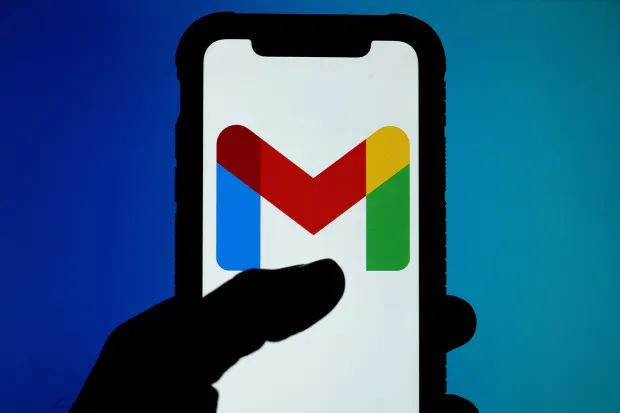Still, Google remains in the spotlight for a new incident after a report pointed out that the company received a data leak containing millions of emails. This leak comprised not only the content of the emails but also of the other details of the users such as the geographical location and Internet Protocol details. These reports outlined how google allegedly improperly dealt with millions of e-mails, which contained personal and identifiable user information.
this article offers greater details about this precise case and suggests viable motives for the assault, the information that became leaked, and the consequences for customers. We will also describe the measures that Google needs to undertake to regain users’ confidence in their services and ensure better information security in the future.
What Caused the Millions of Emails Leak?
Some of the key questions relating to the incident are as follows: The identity of the source of the leak is yet to be established with much certainty. However, the internal documents leaked to the public raise some concerns over the company’s data processing policies, in this case Google. Some possible explanations could include: Some possible explanations could include:
- Accidental exposure: Screwed up emails: Due to some maybe human error, or technical fault, millions of emails could have been leaked. This could arise from misconfigured servers, or even people within the organization’s network transferring file information to other unauthorized organizations or people.
- System vulnerabilities: Due to inadequate security measures in Google’s operations, the firm’s operations could be subject to exposure to hacker attacks resulting in leakage of its data.
The company has not come out to explain the root cause of the leak, although it is a common aspect in large organizations.
What Data Was Exposed in the Millions of Emails Leak?
The leaked documents claim that the exposed data included the following:
- Email content: It may contain the emails of personal communications, correspondence of an employee during the working day and other non-public information.
- Geolocation data: It appears that the leak could involve the geolocation data tied to the users’ e-mail addresses. It allowed identifying a user’s location at the time they sent or received an email.
- IP addresses: Other data may have included information on the user’s location and Internet service provider evident from the IP address.
The possible consequences of this particular leak have become the most disastrous. B. Negative impact of exposed email content. The collection of geolocation data and IP addresses also contributes to the threat level that exists in the realm of stalking and surveillance.
How Does This Leak Impact Users?
The leak exposed millions of users’ emails, putting them at risk of various potential dangers, including:
- Phishing attacks: This would mean that through the leaked emails they would be able to prepare speeches that look more authentic, this is real. These emails can entice users to share their account information or click on links which will harm their device.
- Identity theft: Identity theft-related activities usually utilize open email addresses and other submitted details. It can entail cases where criminals signed up and gained access to an account different from the user’s account using the stolen identifier.
- Targeted marketing: Companies may use data for promotional or marketing techniques that can be intrusive and bothersome to the user, such as sending unwanted messages.
Here are some steps you can take:Here are some steps you can take:
- Change your email password: Ensure you have a secure strong password for your email account and do not use the same password they have used when creating other online accounts.
- Enable two-factor authentication (2FA): To access your email, 2FA enhances security by requiring you to provide a code in addition to your password as a form of authentication.
- Be cautious of suspicious emails: Do not respond to emails that alleged to be from recognised contacts and ask for sp ecial information or are related to questionable sites.
- Monitor your online accounts: Also, make sure that you check the bank statements and credit reports for signs of violation.
What Can Google Do to Regain User Trust?
Regaining user trust after a data leak requires transparency and concrete action. Here are some steps Google can take:
- Conduct a thorough investigation: It also makes me noticed that to regain the trust of the users after the data leak, one has to be transparent and act accordingly. Here are some steps Google can take:Here are some steps Google can take:
- Inform affected users: Google should sit down and try to find out where the leak came from and how it can prevent the leak of similar information in the future.
- Offer additional security features: Google has to ensure the protection of the users by dedicating the necessary resources in the creation of a strong data security infrastructure. This includes rebooting the system, installing newer versions of the software, fixing programming flaws, the new measures towards the data access control.
By taking these steps, Google can demonstrate a commitment to user privacy
FAQs on the Millions of Emails Leak
- Is my email address affected?
If you think your email is amongst those that have been leaked, then you should follow the steps highlighted here in this article. This is by resetting your email password, localizing your account and setting up another layer of verification by activating two-factor authentication and avoiding opening any bad email links and constantly checking accounts.
- What steps should I take if my email was exposed?
For this situation, it is significant to talk with a legal counselor or legitimate consultant regarding whether you ought to make a legitimate move, contingent upon the conditions of the spillage and the laws of the country you live in.
- Can I sue Google for this leak?
There are certain things you can do in order to somewhat avoid or in any case, reduce the chances that companies or other entities handle your data inappropriately. Take advantage of good and separate passwords that you should use when creating your account, avoid reusing your passwords in different accounts by enabling the two- factor authentication and being careful with the information that you share in the Internet.
- How can I prevent future email leaks?
While you can’t altogether control how organizations handle your information, you can do whatever it may take to limit the dangers. Utilize solid, one of a kind passwords for all your web-based accounts, empower two-factor validation whenever the situation allows, and be careful about the data you share on the web.
Conclusion
The millions of emails leak situation is a major concern for any user and is a clear violation of user privacy which leads to a question mark on Google’s data security strategies. The way Google can work to regain the users’ trust is by ensuring that they undertake a detailed investigation on the issue, inform the users of what they discovered, and upgrade their data security systems.
This release fills in as an obvious sign of the significance of information security in the present computerized age. Clients should stay watchful and do whatever it may take to safeguard their own data, while organizations have an obligation to carry out strong safety efforts and focus on client security.




